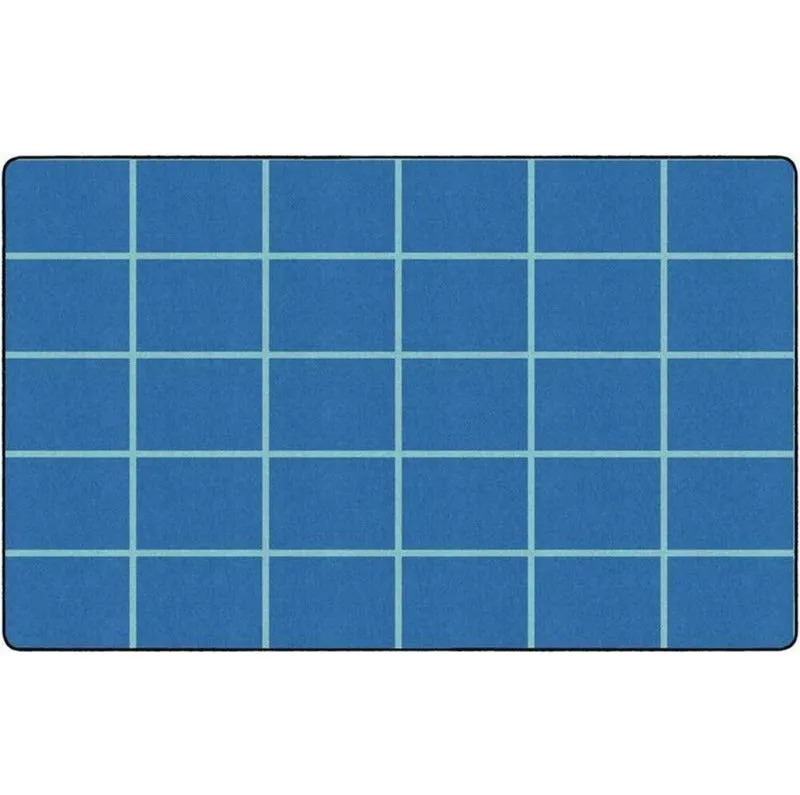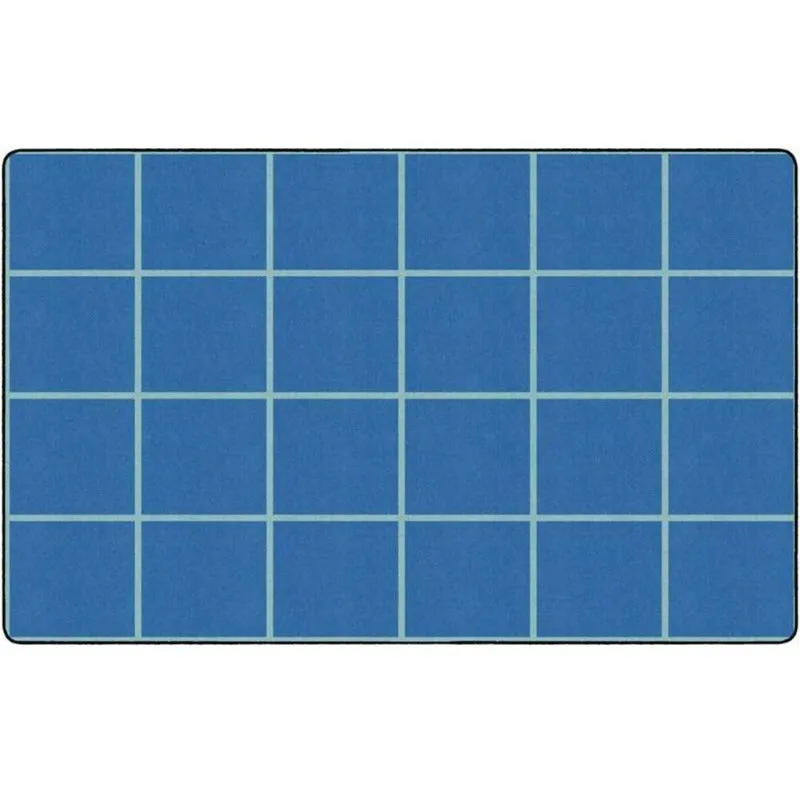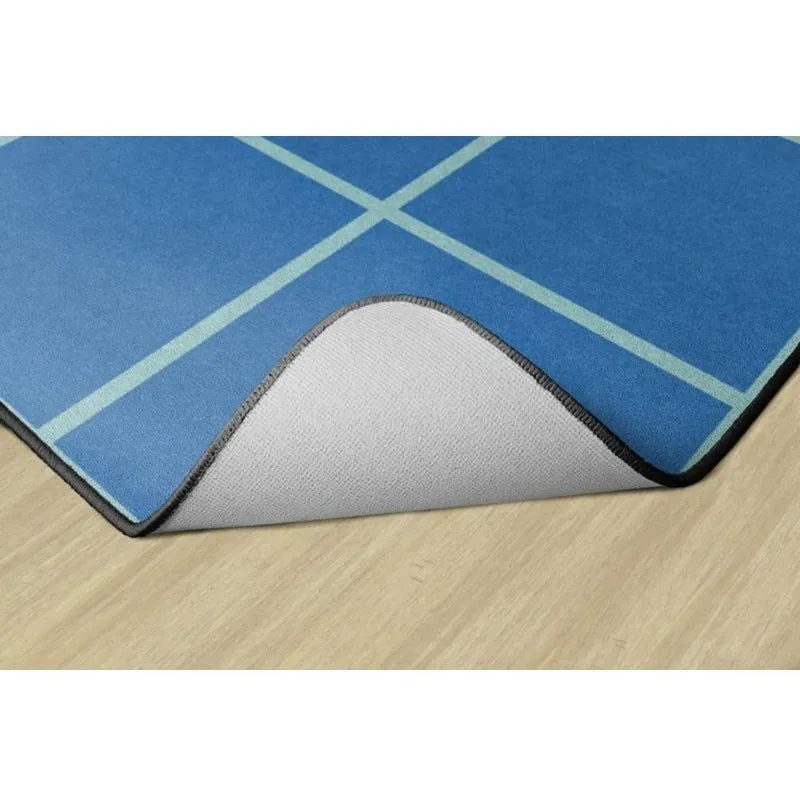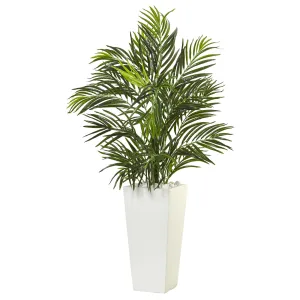Bring a touch of ocean calm to your space with our Deep Blue Sea Grid Rug. This rug features a soothing blue background divided into neat squares by light blue lines.
Please measure your area and choose the right size.
Sizes:
- 6' x 8'4 -24 Seats are 16.8" x 16"
- 7'6 x 12' - 24 Seats are 22.5" x 21"
- 7'6 x 12' - 30 Seats are 23.7" x 17.7"
The grid pattern adds a modern twist to the classic blue rug, making it perfect for both traditional and contemporary rooms.
The rug's deep blue color reminds you of the vast ocean, while the grid design gives it structure and style. It's an excellent choice for learning areas, waiting rooms and places children gather. Create a peaceful yet organized feel.
This rug is both comfortable underfoot and built to last. Its versatile design works well with various styles and color schemes, making it easy to incorporate into your existing classroom decor.
- Made in the U.S.A.
- Highest fiber density, with an infusion dye process that ensures bright color.
- Anti-Microbial and Anti-Static Treatment guards against odor, mildew and mold.
- Treated with Scotchgard protector for superior soil resistance.
- Class I Flammability Rating and Indoor Air Quality passed.
- Bound and double stitched with nylon edge yarn for maximum strength and durability.
The deep blue sea is a fascinating and mysterious part of our planet. Here are some interesting facts about it:
Depth and Pressure: The deep ocean begins at around 200 meters (656 feet) below the surface and can reach depths of over 11,000 meters (36,000 feet) in places like the Mariana Trench. The pressure at these depths can be more than 1,000 times the atmospheric pressure at sea level.
Biodiversity: Despite the extreme conditions, the deep ocean is home to a wide variety of life forms. Many species are bioluminescent, producing their own light to attract prey or mates, or to deter predators.
Temperature: The temperature in the deep ocean is just above freezing, typically ranging from 0 to 3 degrees Celsius (32 to 37.5 degrees Fahrenheit).
Exploration: Much of the deep ocean remains unexplored. It is estimated that more than 80% of the ocean is still unmapped and unexplored.
Hydrothermal Vents: The deep ocean hosts hydrothermal vents, which are cracks in the ocean floor that release geothermally heated water. These vents create unique ecosystems where organisms thrive without sunlight, relying on chemosynthesis rather than photosynthesis.
Giant Squid: The deep sea is home to the elusive giant squid, which can grow up to 43 feet (13 meters) long. These creatures were once thought to be mythical until they were first photographed in their natural habitat in 2004.
Whale Falls: When a whale dies and its carcass sinks to the ocean floor, it creates a unique ecosystem known as a whale fall. These provide a rich food source for deep-sea organisms for years or even decades.
Midnight Zone: The deep sea is often divided into zones, with the midnight zone (or bathypelagic zone) being one of the most mysterious. It extends from 1,000 meters (3,280 feet) to about 4,000 meters (13,123 feet) below the surface and is perpetually dark.
Ocean Currents: Deep ocean currents, also known as thermohaline circulation or the "global conveyor belt," play a crucial role in regulating Earth's climate by distributing heat around the planet.
Marine Snow: Organic material, like dead plankton and fecal matter, falls from the upper layers of the ocean to the deep sea, creating a continuous "snowfall" of nutrients that sustains deep-sea life.
These facts highlight the deep blue sea's complexity and its critical importance to our planet's overall health and climate.



















